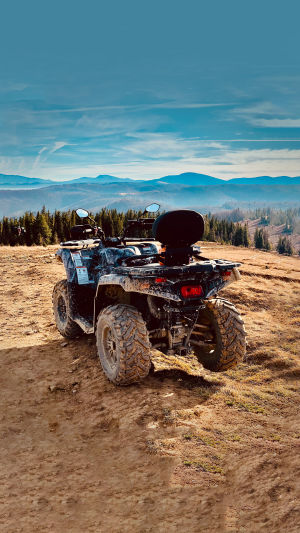The motorcycle represents a symbol of freedom. However, most motorcycles prioritize comfort and are limited to paved roads. In other words, many motorcycles can't successfully navigate off-road terrain.
But for those who wish to venture into rugged terrain, off-road models offer a solution, allowing riders to break free from the constraints of established roads. In the world of off-road riding, one can truly experience the freedom of movement, even soaring through the air.
The personal equipment used by off-road riders is distinctly different in design from that used in racing cars due to their diverse requirements.
1. Off-road Helmet
Off-road riders use helmets with an extended peak or visor at the top. This design feature shields riders from obstacles like tree branches and other debris found on forest roads. The helmet also includes a visor that can accommodate goggles for added protection.
2. Eye protectors with Windshield
Typical helmet lenses lack durability, but in the demanding world of off-road activities, the lens must withstand impacts from foreign objects. Many riders opt to use eye protectors with sturdy lenses that offer high strength and excellent visibility.
The inner strap of these eye protectors features a non-slip design to prevent sliding due to the smooth helmet surface.
3. Off-Road Boots
Off-road boots distinguish themselves from regular boots by reinforced ankle joints. This design minimizes the risk of ankle injuries when navigating challenging terrains. While off-road boots may sacrifice some mobility, they provide substantial protection for the feet. Some humorously refer to them as "iron shoes."
4. Jerseys and Pants
Off-road riders often wear colorful jerseys that help them remain inconspicuous on forest trails. These jerseys are crafted from breathable and moisture-wicking materials to avoid discomfort caused by wetness and stickiness, which could affect their vehicle control.
5. Chest, Knee, and Elbow Guards
To enhance flexibility during technical maneuvers, off-road riders wear protective gear beneath their jerseys. These protective elements, such as knee and elbow pads, share similarities with those used in traditional racing jackets. However, off-road riders face different types of injuries, including impacts, so they also employ chest protectors to mitigate chest injuries.
6. Off-Road Gloves
Gloves provide basic protection and cushioning, essential for shielding riders' hands from grass, branches, and other debris encountered on forest trails. Since many off-road models lack handguards, gloves become crucial for delicate throttle control. Most off-road gloves are short for this reason.
Compared to other vehicles, off-road motorcycles possess remarkable adaptability to challenging terrains. The ability to conquer obstacles at any moment grants riders unparalleled freedom. Slicing through rough terrain amidst flying sand is a thrilling aspect of off-road sports.





